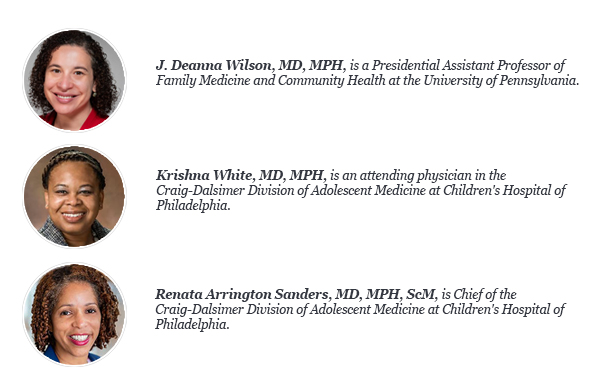Syringe Services Programs Are Critical for Adolescents and Young Adults: Research and Clinical Perspectives


As physicians who take care of young people with substance use disorders, we recognize the significance of harm reduction approaches in helping adolescents and young adults who use injection drugs, and the impact harm reduction has on our patients.
Syringe services programs, such as the one in Philadelphia, are supported by nearly 30 years of evidence-based research and policies promoted by the Substance Abuse and Mental Health Services Administration (SAMHSA), the Centers for Disease Control and Prevention (CDC), and the U.S. Department of Health and Human Services (HHS). More importantly, such programs do more than provide a safe way to dispose of used syringes and obtain sterile syringes at no cost. They provide critical linkage to substance use treatment, case management, overdose prevention services and access to reversal education, wound care, housing, police-assisted diversion, and testing programs aimed at preventing infections that can be spread through injection drug use such as HIV and viral hepatitis, including the hepatitis C virus.
Any effort to reduce funding for programs providing this essential care will amplify harm not only to the adolescents and young adults who need sterile syringes but, by extension, the broader community of Philadelphia.
In this blog post, we will outline why this is particularly important for adolescents and young adults.
Adolescents and young adults are using injection drugs and doing so in a way that increases their risk for other health issues.
The average age for initiating opioid use is 16 years old and may be preceded by other substance use.
Nearly 50% of youth (ages 18-24) who inject drugs share needles, which is more than any other age group and contributes to their increased risk of contracting HIV and hepatitis C. Additionally, the developing brain places adolescents at risk of substance use disorder (SUDs), or addiction, because of inherent structural and functional neurobiological changes that take place during adolescence.
Locally, in 2021, adolescents and young adults accounted for approximately one-quarter of the newly diagnosed HIV and acute hepatitis C cases reported in Philadelphia.
These illnesses are preventable and costly. And, in our current clinical landscape, it is very hard to find integrated treatment for youth with these diagnoses.
Harm reduction works and is relevant for adolescents and young adults
Harm reduction is an evidence-based approach to lessen the negative impacts of drug use. Syringe services programs are one example of harm reduction as they help prevent the spread of viral hepatitis infections like hepatitis B and C and HIV from one person to another through shared needle activities.
Robust research demonstrates that needle exchange, supported by syringe services programs, is effective for reducing disease transmission. In a 2022 report, Philadelphia’s Department of Public Health also highlighted that the reverse—restrictive syringe distribution policies—“decrease engagement with social and medical services, including substance use treatment services.”
Adolescents, young adults, and their families are protected when harm reduction is prioritized. Harm reduction helps young people by keeping them alive and healthy and by offering opportunities to engage in future treatment.
Policy opportunities to support harm reduction solutions is important for adolescents
There are several opportunities to support harm reduction solutions. The White House Office of National Drug Control Policy (ONDCP) offers a model law for states to expand access to syringe services programs.
Strategies and funding to support harm reduction should reflect adolescents and young adults as a target population. There remain opportunities to incorporate adolescents in SAMHSA’s Harm Reduction Framework in order to ensure that investments in harm reduction services do not exclude specific populations.
As adolescent health providers, we recognize adolescence as a vulnerable developmental period when many begin to face challenges with substance dependence. We therefore believe that not only funding, but forthright support of syringe services programs is critical to upholding the dignity of adolescents and young adults. Syringe exchange achieves this goal not only by providing the basics needed to prevent needle-associated infections; it also gives the opportunity to constantly reengage with providers who can connect youth to necessary recovery services that include housing and other wrap-around support necessary to live full and healthy lives, which all Philadelphians deserve.
Other health professionals and allies have acknowledged the impact syringe services programs have had on incidence of HIV and viral hepatitis infection in our Philadelphia community and have advocated for sustained action to support syringe services programs standing on this evidence. As adolescent providers, we hold our patients in mind as we highlight the importance of evidence-based syringe policies for youth.
